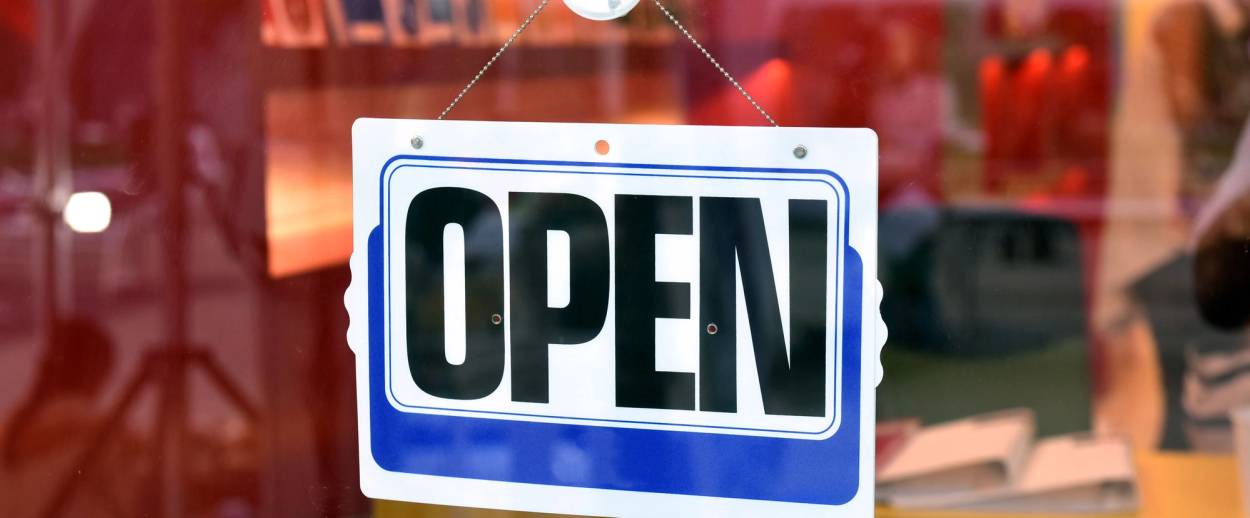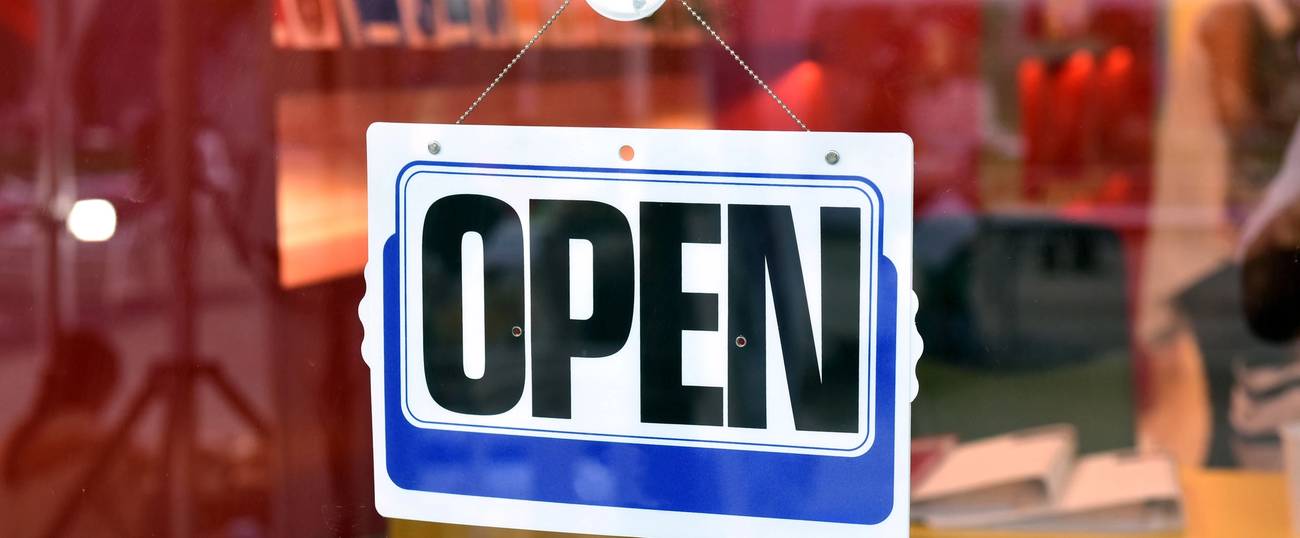Defining ‘Open Orthodoxy’
What a shift in focus—from obsessing over boundaries to creating welcoming spaces—could mean for our future




Since the founding of Yeshivat Chovevei Torah (YCT), and some years later, Yeshivat Maharat (YM), I and others have been asked whether we are creating a new movement within Orthodoxy. Movements are generally not announced; they evolve. They are not proclaimed; they emerge, sometimes gradually, other times, swiftly. Their growth is usually painstaking, surfacing here and there. While they meet opposition, if they are strong and viable, they coalesce to become a powerful voice. It’s only years later that one can assess whether a movement has taken root.
But of one matter I am certain: Since the early ’90s, Orthodoxy has undergone a number of great shifts. Responding to a precipitous move to the right within Modern Orthodoxy, a plethora of institutions and organizations have emerged. These include the Jewish Orthodox Feminist Alliance (JOFA), Edah, YCT and YM, the Institute for Jewish Ideas and Ideals, and the International Rabbinic Fellowship (IRF). In Israel, too, Beit Morasha, Beit Hillel, Ne’emanei Torah Ve’Avodah and others were founded and today women are being ordained (receiving semikha) from Yeshivat Maharat as well as Yeshivat Har’el.
Modern Orthodoxy, which 25 years ago faced a significant decline, has been reclaimed by tens, even hundreds of thousands of adherents.
Debate has surfaced over what this reassertion should be called. In the end, names are secondary to the substantive changes that have been put in place. Still, names matter as they are descriptive of what we are, our mission and values, taking into account the changes and challenges of the times.
For example, when Rabbi Norman Lamm became president of Yeshiva University (YU) in the late ’70s, he abandoned the term “Modern Orthodoxy,” replacing it with “Centrist Orthodoxy.” My sense is that he did so as a way of distancing Yeshiva University from Rabbi Emanuel Rackman and Rabbi Yitz Greenberg, two of the most dynamic and charismatic leaders of Modern Orthodoxy. For RIETS (Yeshiva University’s rabbinical school) and the RCA (the rabbinical organization of which most YU rabbis are members), Modern Orthodoxy was becoming too liberal. A more cautionary, middle of the road label was necessary: Centrist Orthodoxy.
From the beginning, I and others were uncomfortable with this term. Centrist Orthodoxy never resonated, as it suggests a position in the center of those on both sides. As the flanks shift, the center must also shift in order to remain in the middle. Centrist Orthodoxy becomes reactive, losing its autonomy.
With the advent of YCT, YM, the IRF, JOFA, and others, honest and respectful discussion is taking place concerning what terms should be used to describe these new phenomena in Orthodoxy.
Some suggest the continued use of the term “Modern Orthodoxy.” Modern Orthodoxy is a trademark term. Bearing in mind that it has been abandoned by RIETS and the RCA, a vacuum has been created. Why not fill that vacuum by reclaiming it and infusing it with new ideas and new perspectives while holding on to the term with which people feel comfortable.
Others, like myself, prefer a new term: “Open Orthodoxy.” In the ’60s and ’70s, Modern Orthodoxy dealt primarily with two issues: secularism and Zionism—more broadly, the modern secular world, and the modern State of Israel. Modern Orthodoxy insisted that one could be Orthodox while embracing the humanities and science, even as one could be Orthodox while committed to the rebirth of the State of Israel.
Truth be told, those battles are behind us. Today, large portions of the Haredi world encourage their young people to attend college and to participate in the workforce. They may not see “holiness” in disciplines outside of Torah, but they have come to understand the importance of acquiring skills to making a living and getting along in the modern world. While secularism for the Haredi has no pure, intrinsic value, it is a means to a greater end.
Over time, the Haredi world has also become more committed to the welfare of Israel—its defense and citizenry—even as it rejects the religious significance of the establishment of the State. Agudah, Shas, and Chabad do not sing Hatikvah, they do not recite tefillah lishlom ha-medinah, but care deeply about the welfare of Israel, the safety of its citizens and its security.
“Modern” issues of 40 and 50 years ago are no longer modern. We are, in fact, in the postmodern era, as we face new issues and challenges.
The dividing line within Orthodoxy today revolves around inclusivity. Is Orthodoxy inclusive of women—encouraging women to become more involved in Jewish ritual and Jewish spiritual leadership? Notwithstanding the Torah prohibition on homosexuality, are those in such relationships included as full members in our synagogues, and are their children welcomed into day schools? Do we respect, embrace, and give a forum to those who struggle with deep religious, theological, and ethical questions? Do we insist upon forbiddingly stringent measures for conversion, or do we, within halakhic parameters, reach out to converts with love and understanding? Should Orthodox rabbinic authority be centralized, or should it include the wide range of local rabbis who are not only learned but also more aware of how the law should apply to their particular communal situations and conditions? Are we prepared to engage in dialogue and learn from Jews of other denominations, and, for that matter, people of all faiths?
Put simply, is our focus on boundaries, fences, high and thick—obsessing and spending inordinate amounts of time ostracizing and condemning and declaring who is not in—or is our focus on creating welcoming spaces to enhance the character of what Orthodoxy could look like in the 21st century? To quote the late Rabbi David Hartman’s description of having been raised Orthodox: “I grew up in a home where I didn’t feel piety needed an object to hate. I felt close to God without saying, ‘I don’t like him, I don’t go into his shul.’ I never felt piety through anger and negation, but piety was the result of internal conviction and joy.”
This is Open Orthodoxy. While insisting on the foundational divinity of Torah and observance of halakha, this Orthodoxy is not rigid. It is open to a wider spectrum.
In my travels through America, I have found that people—the amcha—have become alienated from such ossified terms as “Modern Orthodoxy.” This term no longer reflects vibrancy; it is dried up. People are looking for something new that speaks more directly to their inner convictions and passions. They are looking for an Orthodoxy that is inclusive, non-judgmental, and open.
It’s the model of our forebears Sarah and Abraham. Unlike Noah, who is best known for his ark—insulated and separated by high walls from the rest of society—Abraham and Sarah dwell in a tent. It is open on all sides, welcoming not only those who come in, but they are also prepared to run out of the tent and greet all passersby, encouraging them to drink from the waters of Torah.
***
Like this article? Sign up for our Daily Digest to get Tablet Magazine’s new content in your inbox each morning.
Rabbi Avi Weiss is the founding rabbi of the Hebrew Institute of Riverdale, the founder of Yeshivat Chovevei Torah and Yeshivat Maharat, and co-founder of the International Rabbinic Fellowship. He served as National Chairman of the Student Struggle for Soviet Jewry and the Coalition for Jewish Concerns. He is the author of Spiritual Activism: A Jewish Guide to Leadership and Repairing the World. He is the proud grandfather of Eitan Fischberger.